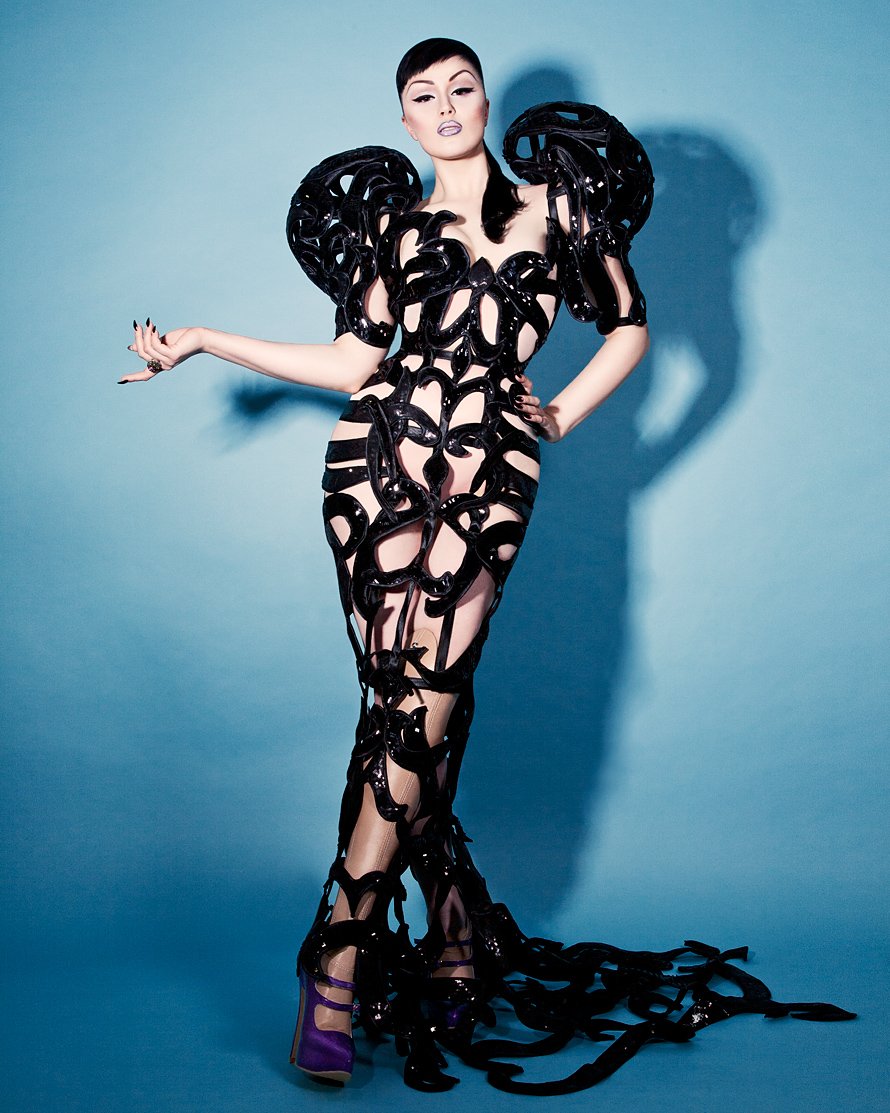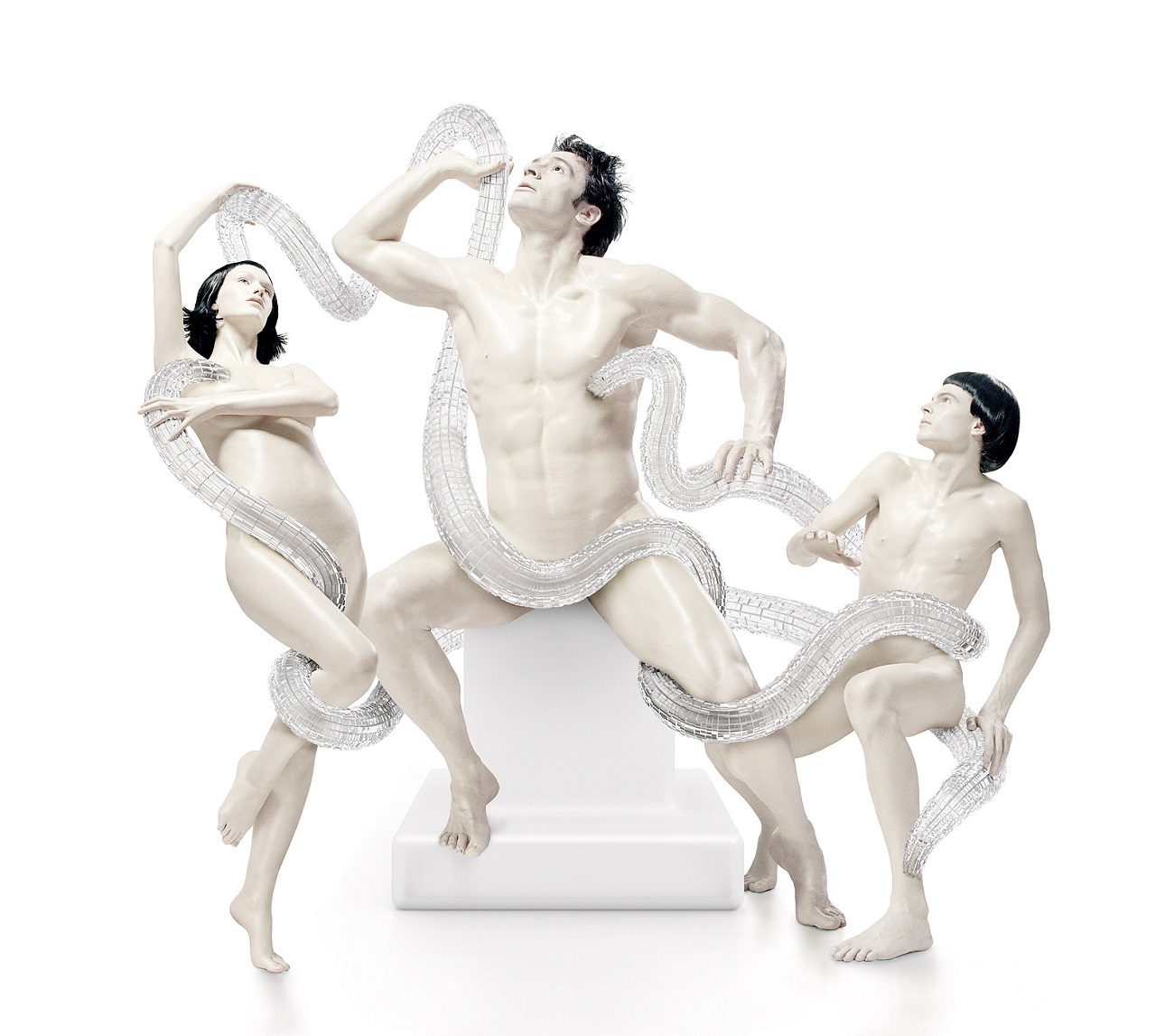


ICD AND ITKE RESEARCH PAVILION
Pavilhão de pesquisa biônica
O Instituto de Design Computacional (ICD) e o Instituto de Estruturas de Edifícios e Design Estrutural (ITKE) da Universidade de Stuttgart construíram outro pavilhão de pesquisa biônica. O projeto faz parte de uma série bem-sucedida de pavilhões de pesquisa que mostram o potencial de novos processos de design, simulação e fabricação em arquitetura. O projeto foi planejado e construído em um ano e meio por alunos e pesquisadores de uma equipe multidisciplinar de arquitetos, engenheiros e biólogos. O foco do projeto é uma estratégia de design de baixo para cima paralela para a investigação biomimética de cascas de compósitos de fibra natural e o desenvolvimento de novos métodos de fabricação robótica para estruturas de polímero reforçadas com fibra.

Ka Fai Choy
Synchrometrics
Can we design future memories for the body?
Is the body itself the apparatus for remembering cultural processes?Prospectus For a Future Body proposes new perspectives on how the body remembers and invents technological narratives. Central to the project is the study of body movement in dance: How it can evolve, adapt or re-condition to possible futures?Eternal Summer Storm explores the concept of muscle memory transfer as an alternative form of interactive cultural continuities. This concept prototype speculates on a future digital library of body movements or dance techniques that can be experienced beyond the audio-visual conventions. Eternal Summer Storm attempts to recreate legendary Japanese dancer Tatsumi Hijikata’s Butoh dance choreography and experience in ‘A Summer Storm’ (1973) from archival footages.Bionic Movement Research is a collection of experiments on the process of designing digital muscle memory for the body. Inspired by Luigi Galvani discovery (1780) of animal electricity in the human body, these experiments appropriate the techniques of electrical nerve stimulation to choreograph artificial muscle contraction and body movement.

MICHAEL NAJJAR
史上第一位進入太空的藝術家
Bionic Angel
The work series “bionic angel” takes as its starting point the future transformation and technological control of human evolution. Rapid development in the field of so-called “g-r-i-n techno-logies” (genetics, robotics, information and nano-techno- logies) are changing our bodies, minds, memories, and identities, but also impact on our progeny. These technologies all converge with the aim of enhancing human performance. Prenatal genetic determination enables children to be built to plan.

Viktoria Modesta
prototype
Viktoria Modesta is bionic artist, multimedia performance artist, creative director, DJ and a supporter of future innovations. Her work explores modern identity through performance, fashion, avant garde visuals, technology and science.



ICD and ITKE Research Pavilion
bionic research pavilion
The Institute for Computational Design (ICD) and the Institute of Building Structures and Structural Design (ITKE) of the University of Stuttgart have constructed another bionic research pavilion. The project is part of a successful series of research pavilions which showcase the potential of novel design, simulation and fabrication processes in architecture. The project was planned and constructed within one and a half years by students and researchers within a multi-disciplinary team of architects, engineers and biologists.
The focus of the project is a parallel bottom-up design strategy for the biomimetic investigation of natural fiber composite shells and the development of novel robotic fabrication methods for fiber reinforced polymer structures. The aim was the development of a winding technique for modular, double layered fiber composite structures, which reduces the required formwork to a minimum while maintaining a large degree of geometric freedom. Therefore, functional principles of natural lightweight structures were analyzed and abstracted in cooperation with the University of Tübingen and the Karlsruhe Institute of Technology. Through the development of a custom robotic fabrication method, these principles were transferred into a modular prototype pavilion.


GRAHAM THOMPSON
Synthetic Sustainability
Graham Thompson tries to redefine urbanism by proposing urban synthetic hyper structures that sustainably manage urban density, personal space, and communal areas. A fresh graduate from the Bartlett School of Architecture the proposal features undulated surface towers, farming zones, clean energy generating systems, green transportation facilities and recreational areas. The sustainable structure would come along a water depository within barren undeveloped land ready for zoning. The undulating bionic towers of the project would act as urban farming zones that promote local flora and fauna managed by the inhabitants for sustainable growth. These agricultural zones have individual harvesting grids with water filtration and nutrient monitoring systems. The tower canopies are layered with solar recharging zones to harvest solar energy and locally meet power needs. Graham also visualizes eco train stations for green transportation along with green service stations for eco car charging.


MICHAEL NAJJAR
史上第一位進入太空的藝術家
bionic angel
«Бионический ангел» Серия работ «Бионический ангел» берет за отправную точку будущее преобразование и технологический контроль эволюции человека. Быстрое развитие так называемых «g-r-i-n технологий» (генетика, робототехника, информация и нанотехнологии) меняет наши тела, разум, воспоминания и личность, но также влияет на наше потомство. Все эти технологии объединяются с целью повышения производительности труда человека. Пренатальная генетическая детерминация позволяет детям строить планы. Тела клонов становятся хранилищами для эрзац-органов, в то время как манипуляции с атомной структурой создают новые тела, которые намного превосходят старые с точки зрения прочности, эластичности и долговечности. Новые кузова адаптированы к потребностям высокоскоростной магистрали передачи данных. Эти разработки, основанные на генетических алгоритмах и нейронных сетях, означают, что теперь можно контролировать биологическую эволюцию; они открывают путь к новой, высшей форме существования для человека. Такие акты трансгрессии уже подразумевались в идеализированных телесных образах греческой мифологии, которые итальянский ренессанс принял как идеальное выражение радикальной трансформации с точки зрения понимания тела, разума и науки – светский человек стал утопическим обещанием. Ссылаясь на такие идеализированные миры тел из античности и эпохи Возрождения, серия работ «Бионический ангел» поднимает темы метаморфоз из классической греческой мифологии в трактовке римского поэта Овидия. Сценарии существ, находящихся в муках трансформации, формулируют неизбежность генетического самотворения в будущем человеческой истории. Сам момент метаморфозы служит ключевой метафорой для технологической трансформации человеческого тела в его будущем пост-человеческом и, возможно, бессмертном существовании. «Лаокоон» По мере того, как технология миниатюризируется, ее легче имплантировать в человеческое тело, превращая его в интерфейс, адаптированный к скоростям магистралей данных. Таким образом могут быть созданы прямые сети “мозг-мозг”. Мотив «лаокоон» основан на греческом мифе о Лаокооне и эллинистической греческой группе фигур в Музее Ватикана.

Michael Najjar
史上第一位進入太空的藝術家
laokoon, from the work series “bionic angel”
„Bionischer Engel“ Die Arbeitsreihe „Bionischer Engel“ geht von der zukünftigen Transformation und technologischen Kontrolle der menschlichen Evolution aus. Die rasante Entwicklung auf dem Gebiet der sogenannten „g-r-i-n-Technologien“ (Genetik, Robotik, Information und Nanotechnologie) verändert unseren Körper, Geist, Erinnerungen und Identitäten, wirkt sich aber auch auf unsere Nachkommen aus. Diese Technologien laufen alle zusammen, um die menschliche Leistung zu verbessern. Durch die pränatale genetische Bestimmung können Kinder nach Plan gebaut werden. Klonkörper werden zu Aufbewahrungsorten für Ersatzorgane, während durch Manipulation der Atomstruktur neue Körper entstehen, die die alten in Bezug auf Robustheit, Elastizität und Haltbarkeit weit übertreffen. Die neuen Karosserien sind an die Bedürfnisse der Hochgeschwindigkeitsdatenautobahn angepasst. Diese Entwicklungen, die auf genetischen Algorithmen und neuronalen Netzwerken basieren, ermöglichen es nun, die biologische Evolution zu steuern. Sie eröffnen dem Menschen den Weg zu einer neuen und überlegenen Existenzform.